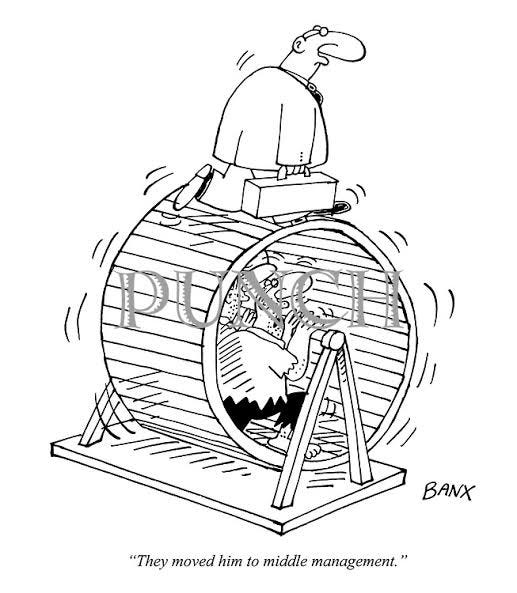Reader feedback re: these markets
Feedback from our lovely readers (I’m not being sarcastic — really, this whole thing depends on you guys, and the fact that 9,000 of you enjoy this every day means a lot).
Anyway, feedback after y’day’s post, which, I’ll admit — after one week in Trump land you can feel like you’ve aged about a decade, because nothing makes sense.
One reader wrote:
Long popcorn, then
Another one of you wrote:
Remember Alan Greenspan’s saying “irrational exuberance”?
And another:
[this market is] another opportunity to separate people who invest in these companies from their money.
I’m inclined to agree with all the above. Markets don’t make sense at the moment, they’re highly irrational, and we’ve been here before. Let’s revisit the dot com bubble, shall we?
Blucora (then InfoSpace): Founded by Naveen Jain, at its peak its market cap was $31 billion and was the largest Internet business in the American Northwest. In March 2000, its stock reached a price $1,305 per share, but by 2002 the price had declined to $2 a share.
Commerce One: A business-to-business software company that reached a valuation of $21 billion despite minimal revenue
Gadzoox: A storage area network company, its shares tripled on its first day of trading giving it a market capitalization of $1.97 billion; the company was sold 4 years later for $5.3 million
Does this feel familiar1? Replace these companies with “AI” “data” or “crypto” and you will have a similar list. The ponzi keeps going — Riot Platforms, a company that mines bitcoin, surged ~+12% today. The problem inherent with a bitcoin mining company is depreciation. The cost of replacing your mining “rigs” every couple of years is more than what you mine, so your EBITDA looks great (no depreciation!) but your NPAT looks bad, because you’ve had to depreciate it all down.
I’m not only trying to rag on bitcoin, but I read a recent paper from one of the big banks that posited it’s an end-times currency. You don’t have USD, you don’t have the Euro, everything’s gone bad and it’s the end times. I can’t help but think, if it’s the end times, then perhaps — maybe — nobody had got servers, and electronics, and digital wallets. It’s the end times! Sorry, but cash money or gold is more likely to be of use in this kind of situation.
In moments of irrational exuberance I find it best to do nothing. So that is what I am doing. I am sitting on the sidelines, personally, and that can be quite a painful thing to do psychologically — plenty of people are minting fortunes out there. It can feel painful to sit on the sidelines, holding cash, missing out. But at the end of the day, why do we do this? There are easier ways to make money, especially before compounding kicks in, in a serious way. I think many of us do this out of intellectual curiosity. The most intellectually rigorous answer I have right now is also the most boring: do nothing.
“When they start having meetings about tidy desks…”
Another thing. I was thinking about when companies jump the shark. Estée Lauder jumped the shark and became mom’s makeup of choice, which is fatal, and now they’re trying to turn it around. Fit bit jumped the shark, mostly because there are better options out there. And yet other companies jump the shark in more insidious, hard to define ways. IBM used to be one of the most innovative companies in the world. GE did too. Between the two of them they invented everything from silly putty (GE), the world’s first full-body X ray (GE), the first American jet engine (GE), floppy disks (IBM), ATMs (IBM) and the magnetic stripe card (IBM). You would be hard pressed to find things they’ve recently invented that have had as much impact. What happened?
A friend of mine was talking about another company, and he said something along the lines of — “You know a company has given up the ghost when they start having meetings about keeping desks tidy”.
What he means is, is that when a company starts to see managerial and professional overcreep — more staff who aren’t directly related to the product — then there’s a problem. It may happen slowly at first — one hire here, another hire here, but the problem with the “professional” classes is that they are like rabbits, and soon enough you are at risk of ending up with an entire organisation of them.
I call this “the meetings about tidy desks problem”, whereas other people might call it “coordination headwind”, which is a more well-known phrase. You can think of it like this:
P (project outcome) = P (person one) * P (person two). If person one and person two put 99 percent effort into the project, the probability of it succeeding is 98%. But the more people you add in, the less likely the effort is going to succeed. Add in just one more person and you end up with a 97% probability of a successful outcome2. You see the problem. The more people you add in, the less the chances of success are. The more managerial/professional people are added into a project, then the chances of success are mathematically lower.
The early projects of IBM and GE were often rendered by small teams. They moved fast. What those corporations have evolved into don’t resemble that. Bigger teams = lower probability of success. Higher chances of meetings about having a clean desk.
This then, I think, is one of the key mistakes founder-led companies make when they scale. Google was pretty smart — for the first ~10 years teams were fairly small and they could continue to scale by telling employees to spend 10% of their time on passion projects outside their role (so you’d have smaller teams again, eventually making things that we take for granted today). Google also hired the right people. Eric Schmidt is a great CEO (compare his performance at GOOG to Steve Ballmer’s at MSFT).
It’s also a problem for companies after scaling. Consider Microsoft again. Under Ballmer, MSFT lurched from wearable disaster (the Zune, an unfortunate and zoomed “iPod killer”) to software disaster (the rollout of Windows Vista), to missing crucial changes in technology like the smartphone. It’s easy to forget just how many botched products Microsoft had prior to Satya’s leadership. The danger of meetings about having clean desks is ever-looming.
From an investing standpoint, it’s tricky. It’s easy to go to Kmart or Bunnings and see why they do well. It’s less easy to go to say, Salesforce. In my experience, though, companies that fall victim to “clean desk meetings” end up being reflected in markets one way or another. Look at Estée Lauder.
Some thoughts on avoiding clean desk syndrome:
1) Know your product
Your product, believe it or not, is not endless meetings, or office gossip, or office politics, or wanting to be praised by your manager. There is a product there and there are customers for it. It is incredible how many companies forget this.
2) Ban buzz words
You know what comes with buzz words? People who don’t know what they’re talking about. If I hear “synergy” again I will stab my eyes out.
3) Be led by product-forward people (and promote them)
Borrowing from Steve Jobs here. Microsoft is a fantastic company that promoted a guy who didn’t get the product — Steve Ballmer. He saw revenue, not the thing that created revenue. Jobs was product-led, and understood that revenue comes after product.
Beware the “clean desk meeting” syndrome, pilgrim.’
Old Notes – Meta
I was going through my old notes and found a write-up I did on Meta, in 2021. In 2021 Meta was in a tough spot. The WSJ was hammering on about it, and the stock had fallen quite a lot. Going through my old notes reminded me of the value of simplicity.
Yet what if we were to tell about about a company with this set of heuristics? Let’s call it “Company A”
Company A has a 31% return on equity and a 20% return on capital.
It has a net income margin of 37% and a FCF margin of 21%
Its income has a compounded annual growth rate over the last 5 years of 41%
If we add in numbers, now, let’s say the net income for 2020 was $29 billion, and $10 billion of that was used to repurchase stock from shareholders?
Let’s say the unlevered FCF is around $6 billion per quarter, and let’s say the debt to equity ratio is about 9x.
In other words, Company A is grows at a quick clip, and has done sustainably for the majority of its life. Its return on capital and return on equity would make any investor happy. Its FCF is an absolute machine.
Would you buy Company A?
Meta’s net income for FY23 was about $39bn, of course. You don’t need to think too hard about it. It’s trading roughly ~150% higher than it did in 2021. It makes more money than ever.
Keep it simple, stupid. D’oh!
Also, think about survivorship bias here — yes, Amazon fell ~98% or whatever too in the dot com bubble and now look at it, but that’s a rare survivor. The majority of these companies swept up in the dot com bubble didn’t survive.
(.99)*(.99)*(.99)

